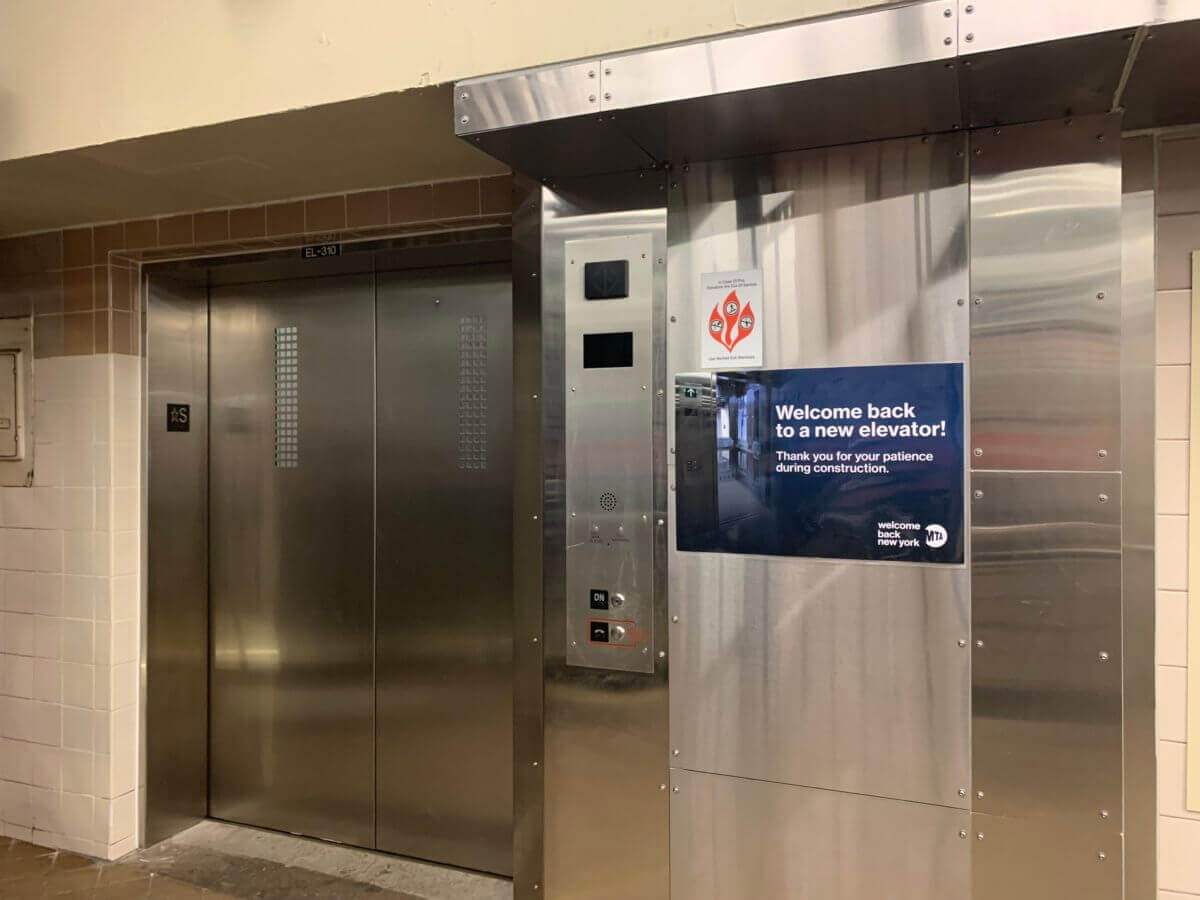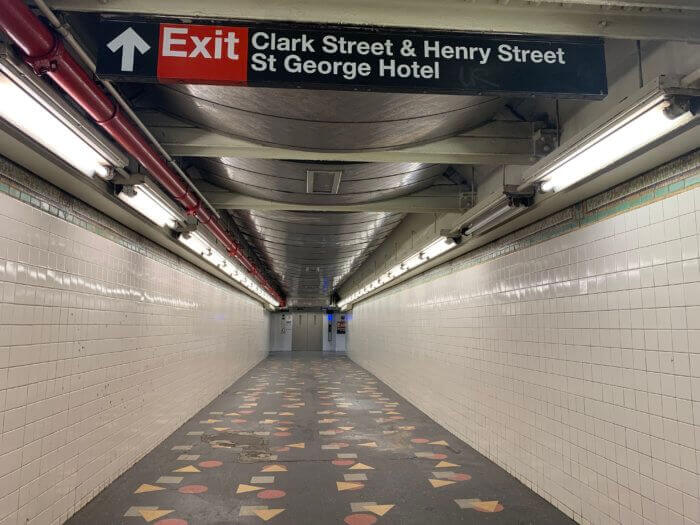New Elevators Bring Commuters Back to Clark Street Station as Small Businesses Still Struggle
The Clark Street subway station reopened with a set of shiny new elevators just about a week ago, but the businesses on the mezzanine level are still struggling.

Eddie Kandov, who owns a watch-and-shoe repair shop in the Clark Street station, said a break in the rent isn’t enough — though the station is open again, business has been slow to recover. Photo by Kirstyn Brendlen
The Clark Street subway station reopened with a set of shiny new elevators just about a week ago, bringing a helpful connection to Brooklyn Heights back online. But the businesses on the mezzanine level are still struggling as riders start flowing back through the station.
The Metropolitan Transportation Authority closed the stop last November so it could replace the station’s three aging, unreliable elevators, which the agency said had “reached the end of their useful lives.”
Because the platform in the station, which serves the 2 and 3 trains, is so deep, it is accessible only by elevator. Though the community largely hoped the MTA would replace the elevators one at a time and leave the station open for the duration, the agency said replacing all three at once, temporarily decommissioning the stop, was both safer and more time efficient.
As projected by the agency last year, the work took just about six months to complete, and straphangers can rest easy in the trio of brand-new elevators. The first set of elevators were more than a century old and had become prone to regular breakdowns in recent years.

“Replacing century-old elevators with new, state-of-the-art elevators under a dramatically compressed schedule to minimize impacts to riders and the surrounding community is a monumental achievement,” said MTA Construction and Development President Jamie Torres-Springer in a release. “By replacing all three elevators at once, we were able to accelerate these enhancements for customers, delivering a critical modernization project and bringing reliable service back to Clark Street in the shortest possible time.”
While trains flew past the shuttered abyssal platform, the street-level mezzanine level stayed open so the small number of businesses operating inside could keep welcoming customers.
But as the closing date drew near, shop owners worried that the station’s temporary closure would hurt their businesses, which rely on customers stopping in for a newspaper or a cup of coffee on their way to and from work.
As a small number of riders filtered in and out of the elevators on Tuesday afternoon, Salahuddin Aziz, the owner of Sun News Inc., said business is “the same as it was” when the station was closed, with very few customers coming in each day.
“Right now, I don’t know what to do,” he said. “You see no traffic. It used to be busy all the time, but no more. People are not going to work, there is no rush hour.”
Business had already taken a hit because of the pandemic, Aziz said. Lockdowns and work-from-home brought subway ridership to an all-time low in 2020, and weekday ridership at the Clark Street station plummeted nearly 70 percent, according to MTA data.
New Yorkers have been slowly but steadily returning to the subways since then, with weekday ridership holding steady at about 60 percent of pre-pandemic levels in recent weeks. While official data is not yet available, daily rides on May 6 of this year were comparable to daily rides on the same day last year, before the closure, according to dailyridership.nyc, an unofficial ridership tracker operated by a New York City software engineer.

“I’ll give it another week or two weeks,” to assess how business improves, Aziz said. But he hasn’t been paying much rent and owes the landlord a significant sum. Pre-pandemic he used to make around $2,000 per day — now it’s between $500 and $600 each day.
The MTA is not the landlord for the Clark Street businesses, so it hasn’t been able to cut the same deal it has with some of the retail spaces it does rent to.
Eddie Kandov, who owns a watch-and-shoe repair shop in the station, agreed with Aziz’s assessment of the first week of the station’s reopening as he stopped in to grab a drink.
The warmer months are always a little bit slower for the shoe repair business, he said, so things are likely to stay difficult for a while. He’s gotten a little bit of a discount on rent but needs more help than that to recover.
Aziz said he’s still holding out hope for some kind of assistance from the government, but hasn’t received anything yet.
“If we can’t get help from the government, I don’t know what we’re going to do,” he said.
An Uzbek immigrant, Kandov recalled that in Uzbekistan, if extraneous circumstances — like construction, or an illness — put someone out of work temporarily, they’d still get paid part of their salary, plus a break on the rent.
“Here, whatever happens, you have to pay the rent,” he said.
Editor’s note: A version of this story originally ran in Brooklyn Paper. Click here to see the original story.
Related Stories
- Small Businesses Inside Clark Street Station Worry About Survival With Eight-Month Closure Ahead
- Feds Grant $800K to Counter Climate Change-Fueled Flooding in Canarsie
- City Mulls Millions to Knit Together Bike and Ped Greenway Network in Brooklyn and Queens
Email tips@brownstoner.com with further comments, questions or tips. Follow Brownstoner on Twitter and Instagram, and like us on Facebook.









What's Your Take? Leave a Comment